Zineb
Synonym(s):Zinc-ethylenebis(dithiocarbamate)
- CAS NO.:12122-67-7
- Empirical Formula: C4H6N2S4Zn
- Molecular Weight: 275.75
- MDL number: MFCD00067266
- EINECS: 235-180-1
- SAFETY DATA SHEET (SDS)
- Update Date: 2024-12-18 14:07:02

What is Zineb?
Description
Zineb is a light-coloured powder/crystal and insoluble in water. Zineb is one of the nonsystemic (surface-acting) fungicides of the group ethylenebisdithiocarbamates (EBDCs). Zineb is a polymer of ethylene (bis)thiocarbamate units linked with zinc and used for the control and prevention of crop damage in the field and also to protect harvested crops from deterioration during storage or transport. Zineb was used to protect fruit and vegetable crops from a wide range of foliar and other diseases. It was available in the United States as wettable powder and dust formulations. Zineb can be formed by combining nabam and zinc sulphate in the spray tank.
Chemical properties
Pure product is white crystal, industrial product is white to light yellow powder. Soluble in carbon disulfide and pyridine, insoluble in most organic solvents, insoluble in water (10mg/L). It is unstable to light, heat and humidity, and decomposes easily when it meets alkaline substances or copper. The decomposition products of zineb include ethylene thiourea, which is more toxic.
The Uses of Zineb
Zineb is a contact fungicide that provides protection against a wide variety of fungal diseases (including leaf spots, blights, rust, downy mildew, scab, etc.) in field crops, fruits, vines, vegetables, ornamentals, citrus and bananas.
The Uses of Zineb
Zineb is a light-colored powder or crystal. It is a polymer of ethylene (bis) thiocarbamate units linked with zinc. Zineb is used to prevent crop damage in the field and to protect harvested crops from deterioration during storage or transport. It was used to protect fruit and vegetable crops from a wide range of foliar and other diseases. It was available in the United States as wettable powder and dust formulations. Zineb can be formed by combining nabam and zinc sulfate in a spray tank.
Definition
ChEBI: Zineb is a polymeric complex of zinc with the ethylene bis(dithiocarbamate) anionic ligand. Formerly used as an agricultural fungicide for the control of downy mildews and rusts, its use is no longer permitted in the US or the EU. It has a role as an antifungal agrochemical. It is a macromolecule, a zinc coordination entity and a dithiocarbamate salt. It contains an ethylenebis(dithiocarbamate).
General Description
An off-white powder. Used as a fungicide.
Air & Water Reactions
Decomposes gradually, accelerated by exposure to air, moisture, and heat. Insoluble in water. Thio and dithiocarbamates slowly decompose in aqueous solution to form carbon disulfide and methylamine or other amines. Such decompositions are accelerated by acids.
Reactivity Profile
Zineb is a zinc salt of a dithiocarbamic acid. May generate flammable gases with aldehydes, nitrides, and hydrides. Incompatible with acids, peroxides, and acid halides.
Hazard
Toxic by inhalation and ingestion; irritant to eyes and mucous membranes. Questionable carcinogen.
Fire Hazard
Flash point data for Zineb are not available, but Zineb is probably combustible.
Contact allergens
Zineb is a pesticide of the dithiocarbamate group. Sensitization can occur in gardeners and florists.
Metabolic pathway
Zineb and other alkylenebis( dithiocarbamate) fungicides are degraded and metabolised via a common pathway. The primary degradation reaction of zineb in water, soil, plants and animals involves the initial dissociation of the metal complex and decomposition to numerous degradation products including ethylenethiourea (ETU) and ethyleneurea (EU) as major products (Scheme 1).
Purification Methods
Crystallise this herbicide several times from hot toluene or from hot CHCl3 by addition of EtOH. It is a skin irritant. [Beilstein 4 III 149, 4 IV 234.]
Degradation
[14C-ethylene]Zineb(1) was decomposed mainly to ETU (2) in an aqueous suspension after 14 days via the 5,6-dihydro-3H-imidazo[2,1-c]-1,2,4- dithiazole-3-thione (3) intermediate (Vonk, 1976). In dilute alkaline solution and in the presence of light, heat and moisture, zineb decomposed rapidly to compound 3 (Marshall, 1978). ETU (2) in aqueous solutions was further converted into 2-imidazoline (4) and EU (5) (kaars Sijpesteijn and Vonk, 1974). Zineb decomposed in sterile marine culture medium to yield ETU (2) and compound 3. In the presence of copper, an additional degradation product, ethylene diisothiocyanate (6), was also observed (Hunter and Evans, 1991).
Toxicity evaluation
Zineb has a low mammalian toxicity however, it may cause adverse reproduction/developement effects if ingested. It is moderately toxic to most fauna and flora.
Properties of Zineb
| Melting point: | 157°C (rough estimate) |
| vapor pressure | <1x l0-5 at 20 °C |
| Flash point: | 90℃ |
| storage temp. | 2-8°C |
| solubility | DMSO (Heated, Very Slightly) |
| form | Water-Insoluble Powder |
| Water Solubility | ca.10 mg l-1 (room temperature) |
| Density | 1.74 g/cm3 |
| Merck | 13,10220 |
| BRN | 4165797 |
| CAS DataBase Reference | 12122-67-7(CAS DataBase Reference) |
| IARC | 3 (Vol. 12, Sup 7) 1987 |
| EPA Substance Registry System | Zineb (12122-67-7) |
Safety information for Zineb
| Signal word | Warning |
| Pictogram(s) |
 Exclamation Mark Irritant GHS07  Environment GHS09 |
| GHS Hazard Statements |
H302:Acute toxicity,oral H317:Sensitisation, Skin H335:Specific target organ toxicity, single exposure;Respiratory tract irritation H410:Hazardous to the aquatic environment, long-term hazard |
| Precautionary Statement Codes |
P261:Avoid breathing dust/fume/gas/mist/vapours/spray. P264:Wash hands thoroughly after handling. P264:Wash skin thouroughly after handling. P273:Avoid release to the environment. P280:Wear protective gloves/protective clothing/eye protection/face protection. P301+P312:IF SWALLOWED: call a POISON CENTER or doctor/physician IF you feel unwell. P302+P352:IF ON SKIN: wash with plenty of soap and water. |
Computed Descriptors for Zineb
| InChIKey | AMHNZOICSMBGDH-UHFFFAOYSA-L |
Zineb manufacturer
New Products
(S)-3-Aminobutanenitrile hydrochloride 4-Methylphenylacetic acid N-Boc-D-alaninol N-BOC-D/L-ALANINOL Tert-butyl bis(2-chloroethyl)carbamate 3-Morpholino-1-(4-nitrophenyl)-5,6-dihydropyridin- 2(1H)-one Furan-2,5-Dicarboxylic Acid Tropic acid 1-Bromo-3,5-Di-Tert-Butylbenzene S-2-CHLORO PROPIONIC ACID ETHYL ISOCYANOACETATE 2-Bromo-1,3-Bis(Dimethylamino)Trimethinium Hexafluorophosphate 4-IODO BENZOIC ACID 3-NITRO-2-METHYL ANILINE 1-(2,4-DICHLOROPHENYL) ETHANAMINE (2-Hydroxyphenyl)acetonitrile 4-Bromopyrazole 2-(Cyanocyclohexyl)acetic acid 4-methoxy-3,5-dinitropyridine 1-(4-(aminomethyl)benzyl)urea hydrochloride 2-aminopropyl benzoate hydrochloride diethyl 2-(2-((tertbutoxycarbonyl)amino) ethyl)malonate tert-butyl 4- (ureidomethyl)benzylcarbamate Ethyl-2-chloro((4-methoxyphenyl)hydrazono)acetateRelated products of tetrahydrofuran

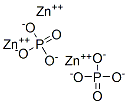

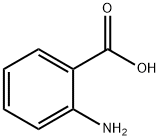

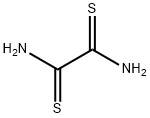
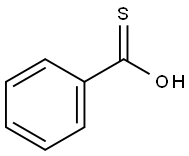

You may like
-
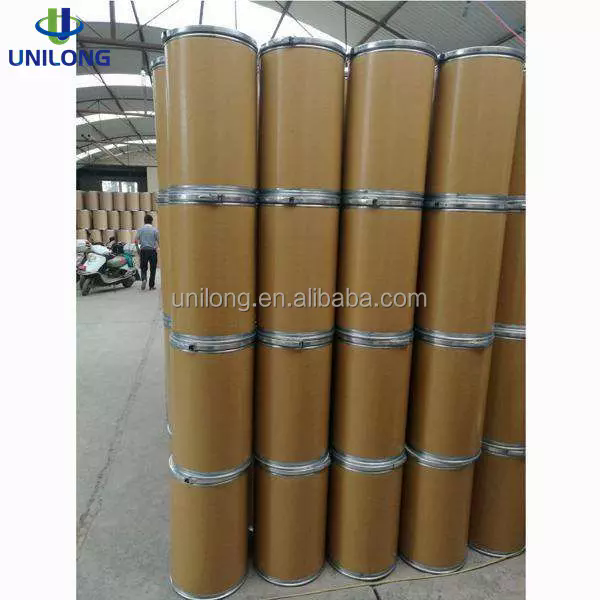 12122-67-7 Zineb 99%View Details
12122-67-7 Zineb 99%View Details
12122-67-7 -
 Zineb CAS 12122-67-7View Details
Zineb CAS 12122-67-7View Details
12122-67-7 -
 ZINEB CAS 12122-67-7View Details
ZINEB CAS 12122-67-7View Details
12122-67-7 -
 Zineb CAS 12122-67-7View Details
Zineb CAS 12122-67-7View Details
12122-67-7 -
 1975-50-4 98%View Details
1975-50-4 98%View Details
1975-50-4 -
 2-HYDROXY BENZYL ALCOHOL 98%View Details
2-HYDROXY BENZYL ALCOHOL 98%View Details
90-01-7 -
 14714-50-2 (2-Hydroxyphenyl)acetonitrile 98+View Details
14714-50-2 (2-Hydroxyphenyl)acetonitrile 98+View Details
14714-50-2 -
 118753-70-1 98+View Details
118753-70-1 98+View Details
118753-70-1